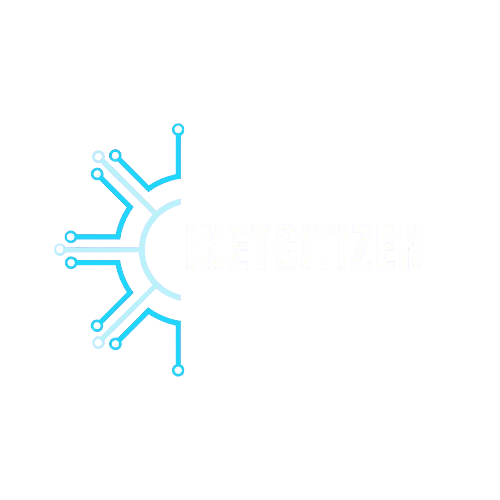Understanding the Concept of Inbound Closing
In the ever-evolving world of digital sales, understanding what is inbound closing can transform how professionals approach customers and drive conversions. Inbound closing is the process of engaging and converting leads who have already shown interest in a product or service. Unlike traditional outbound sales—where representatives reach out cold to potential buyers—inbound closers handle warm leads generated through marketing campaigns, online ads, webinars, or other inbound strategies. These leads have taken the first step by expressing curiosity, which creates a foundation of trust and intent. Instead of aggressively selling, inbound closers focus on guiding prospects through a consultative conversation that helps them make confident purchasing decisions. This shift represents the future of sales—less about persuasion and more about partnership.
The beauty of inbound closing lies in its human-centered nature. It’s about connecting with prospects where they already are in their buyer journey, acknowledging their needs, and helping them find the best solution. As businesses increasingly rely on content marketing and automation to attract clients, the inbound closer becomes the bridge between interest and commitment—a role that’s both strategic and highly rewarding.
How Inbound Closing Works in the Sales Process
To fully understand what is inbound closing, it’s essential to explore how it fits within the overall sales process. The inbound sales journey typically begins with marketing—creating valuable content that attracts attention and captures leads. Once potential customers engage, sales development representatives (SDRs) may qualify these leads before passing them to inbound closers. At this point, the lead is aware of the brand and often comparing solutions. The closer’s job is to provide clarity, personalize the experience, and guide the lead toward a decision.
Inbound closing is structured around trust and timing. Instead of cold calling or spamming messages, closers respond to interested prospects through scheduled calls, discovery sessions, or online demos. This process ensures that both sides benefit from meaningful communication. Many companies—especially in industries like online education, software as a service (SaaS), and consulting—use inbound closers to turn marketing-qualified leads into loyal customers. When done right, inbound closing results in smoother sales, happier clients, and long-term partnerships.
Core Skills Every Inbound Closer Should Master
A successful inbound closer is not just a salesperson—they’re a skilled communicator, strategist, and listener. To thrive in this field, certain abilities make a significant difference in performance and results. Among the most essential are:
- Active listening and empathy – Understanding the prospect’s true needs rather than assuming what they want.
- Relationship building – Creating trust and rapport through authentic communication.
- Strong product knowledge – Being able to explain solutions clearly and confidently.
- Emotional intelligence – Managing tone, timing, and emotional cues during conversations.
- Strategic questioning – Asking the right questions to uncover hidden pain points.
- Objection handling – Addressing concerns with patience and professionalism.
- Guided decision-making – Helping prospects reach conclusions that genuinely fit their goals.
Inbound closing is all about aligning solutions with the customer’s motivations. The closer acts as both consultant and problem solver, ensuring that the client feels heard, supported, and ready to move forward. When these skills combine, they elevate the sales experience from transactional to transformational.
Inbound vs. Outbound Closing: What Makes Them Different
Inbound and outbound closing may share a common goal—to secure sales—but their strategies couldn’t be more different. Outbound closing relies on initiating contact with cold leads, often through phone calls, emails, or direct messages. In contrast, inbound closing begins when a lead expresses interest. This fundamental difference changes the dynamic completely. Prospects in inbound sales already know the brand or product; they’re not being sold to out of nowhere.
While outbound sales can feel pushy or intrusive, inbound closing feels natural and customer-driven. The buyer’s journey is respected, and decisions are based on trust rather than pressure. From a psychological perspective, inbound leads are more receptive because they’ve already taken initiative. Conversion rates are typically higher, sales cycles are shorter, and relationships last longer. Companies that invest in inbound sales strategies often experience a more efficient, scalable, and ethical approach to business growth.
The Benefits of Inbound Closing for Businesses and Sales Professionals
Inbound closing offers clear advantages for both businesses and professionals pursuing sales careers. For businesses, it increases conversion rates by focusing on pre-qualified leads who are already interested. It also reduces costs associated with cold outreach and improves the customer experience through value-driven conversations. For sales professionals, inbound closing provides an opportunity to work smarter, not harder—leveraging genuine connections and meaningful discussions instead of aggressive pitches.
Some key benefits include:
- Shorter sales cycles due to high-quality leads
- Increased customer satisfaction and loyalty
- Better alignment between marketing and sales teams
- More consistent revenue streams from recurring clients
- Career growth opportunities in fast-expanding digital industries
As more companies adopt inbound strategies, the demand for trained inbound closers continues to rise. This evolution is creating a thriving job market for individuals who combine empathy, communication, and sales expertise.
Step-by-Step Breakdown of a Successful Inbound Closing Call
Inbound closing calls follow a thoughtful and structured approach designed to make prospects feel comfortable and confident. The process usually begins with preparation—reviewing lead details, understanding their behavior, and anticipating possible questions. Once on the call, the closer focuses on building rapport, setting a friendly tone, and making the prospect feel valued.
The key steps of a winning inbound closing conversation include:
- Pre-call preparation – Researching the lead’s background, needs, and past interactions.
- Building rapport – Opening with warmth and authenticity to set a positive tone.
- Identifying pain points – Using open-ended questions to uncover underlying challenges.
- Presenting the solution – Connecting product features to the prospect’s personal goals.
- Handling objections – Addressing doubts with confidence and empathy.
- Guiding to a decision – Encouraging commitment in a pressure-free manner.
- Follow-up – Reinforcing the relationship after the sale to ensure satisfaction.
Each step emphasizes respect, understanding, and collaboration—qualities that make inbound closing a standout method in the modern sales landscape.
Common Mistakes to Avoid as an Inbound Closer
Even with the best intentions, inbound closers can make mistakes that hinder performance. One of the most common errors is talking too much without truly listening. Prospects want to feel heard, not overwhelmed. Another frequent issue is failing to properly qualify leads before scheduling calls, which can waste valuable time. High-pressure tactics are also counterproductive and can break trust instantly.
Here are common pitfalls to avoid:
- Focusing on features instead of benefits
- Overloading calls with unnecessary information
- Neglecting to follow up after the conversation
- Sounding scripted or robotic
- Ignoring emotional cues during discussions
By staying mindful of these challenges, inbound closers can refine their communication and maintain authenticity. Success in this field depends as much on self-awareness as it does on sales skill.
How to Become an Effective Inbound Closer
Becoming a skilled inbound closer takes training, practice, and the right mindset. Many start by enrolling in specialized sales programs or online certifications that teach modern communication techniques. Real-world experience also plays a major role—internships, role-play sessions, and mentorships provide valuable practice. Additionally, mastering tools like CRM systems, scheduling software, and analytics platforms helps streamline the process.
To stand out as a professional inbound closer:
- Invest in ongoing learning and personal development
- Study buyer psychology and human behavior
- Build confidence through consistent practice
- Focus on genuine connections rather than quick wins
- Stay adaptable as markets and consumer habits evolve
The most successful inbound closers combine emotional intelligence with technical know-how, creating a balance that resonates deeply with clients and drives long-term results.
The Future of Inbound Closing in the Digital Economy
The digital economy is shaping a new era for inbound closing. With the growth of AI, automation, and online marketing, businesses can now generate leads faster than ever—but human connection remains irreplaceable. Inbound closers are the bridge between technology and trust. They interpret data, personalize interactions, and bring warmth to automated systems.
The future will likely see inbound closers working hand in hand with artificial intelligence to qualify leads, streamline conversations, and personalize recommendations. As social selling and content-driven marketing continue to rise, inbound closing will remain a critical skill for professionals who want to stay competitive and relevant.
Frequently Asked Questions (FAQ)
What is the main goal of an inbound closer?
The main goal is to convert warm, interested leads into paying customers through personalized and consultative communication.
Do inbound closers only work online?
Most inbound closers work remotely, but the approach can also apply in-person or via phone calls, depending on the business model.
What’s the difference between an inbound closer and a sales development rep (SDR)?
An SDR focuses on qualifying and nurturing leads, while an inbound closer takes over to close the deal once a lead is ready.
How much can an inbound closer typically earn?
Income varies widely depending on experience and industry, but many earn commissions that can reach six figures annually in high-ticket niches.
Can someone become an inbound closer with no prior sales experience?
Yes, with the right training and mentorship, anyone with strong communication skills can succeed in this role.
What tools are most useful for inbound closers to manage their leads effectively?
CRM platforms, calendar scheduling tools, and analytics dashboards help inbound closers stay organized and efficient.
Is inbound closing suitable for introverted personalities?
Yes, because inbound closing focuses on meaningful one-on-one conversations rather than aggressive selling, many introverts thrive in this environment.
Takeaway
Inbound closing represents the modern evolution of sales—built on empathy, authenticity, and trust. Instead of chasing leads, inbound closers attract and convert those who are already seeking solutions. For professionals eager to build meaningful connections while achieving high-impact results, mastering inbound closing is not just a skill—it’s a gateway to a thriving and fulfilling career in the digital economy.











